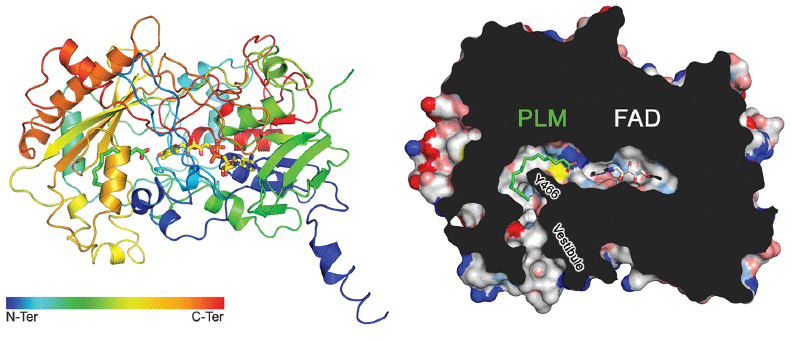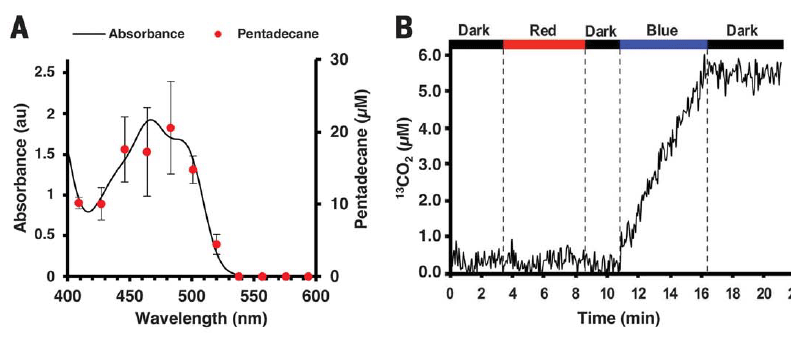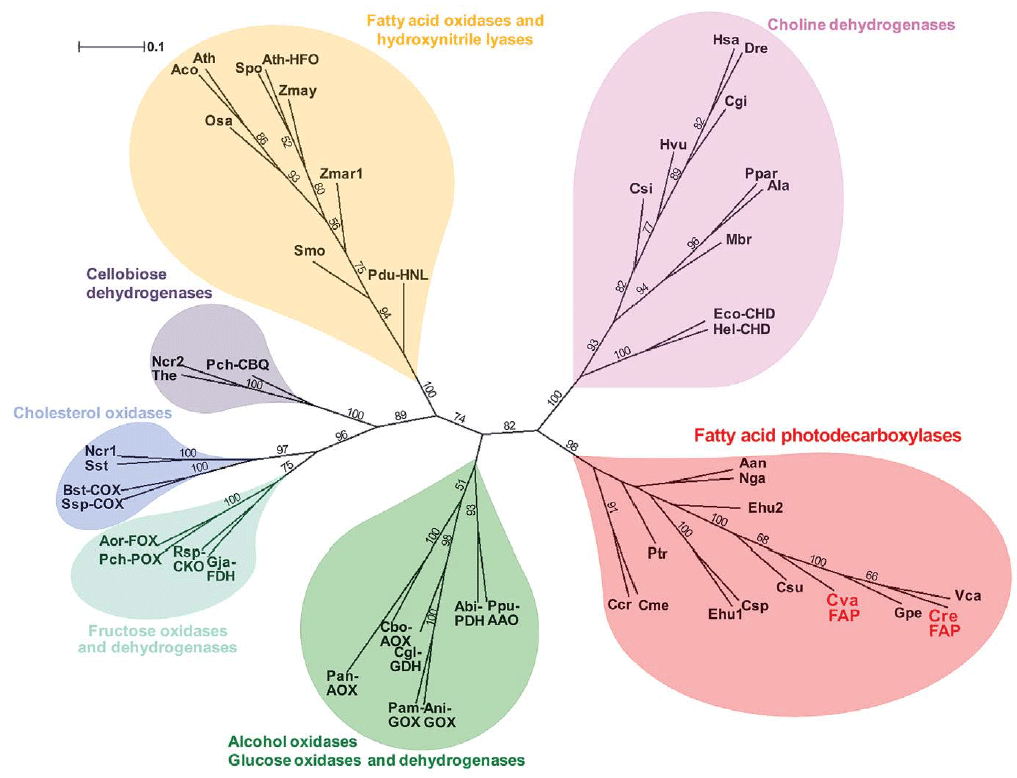Found a photoenzyme that converts fatty acids to hydrocarbons when exposed to light

Structural features of a photoenzyme called fatty acid photodecarboxylase (FAP) with a FAD photosensitive element
Light is involved in many biological processes that occur in living organisms, regardless of the presence of photosynthesis. These are such processes as growth, development, metabolism and daily biorhythms. In most cases, light affects cellular physiology through “intermediaries” - photoactive proteins, including photosensitive ion channels, photoreceptors, light-harvesting complexes, and light-dependent enzymes. The latter can be divided into two types: 1) enzymes with photoactivation, which only need a short flash of light to become active; 2) photoenzymes that require a constant photon flux to maintain the catalytic function. In fact, the latter work on photons as on fuel.
Photoenzymes are a rare type of catalyst. In nature, there are only two families of proteins of this type: DNA photolyase, which in many organisms repairs DNA by UV damage, and protochlorophyllide.
Photoenzymes are very useful tools in biotechnology. They are used to observe fast enzymatic processes in real time, as an auxiliary link in the design of other enzymes and in optogenetics , when specific neural connections in the brain are suppressed or activated by a light command.
At the same time, scientists are known microalgae, like Chlorella variabilis NC64A or Chlamydomonas reinhardtii 137C, which convert long chains of fatty acids into alkanes (saturated hydrocarbons) or unsaturated hydrocarbons, and this process depends on the presence of light.
A group of scientists from the Institute of Bioscience and Biotechnology at the University of Aix-Marseille (France) was able to isolate a specific photoenzyme that synthesizes alkanes in the green microalga Chlorella variabilis .
The importance of the discovery is hard to overestimate, because the photoenzyme does not require any other factors at all for the synthesis of alkanes, except fat and sunlight. This enzyme can be introduced into other living organisms, including bacteria, and used in industry.
A study of the photoenzyme photosensitivity showed that it is most sensitive to light with a wavelength of 450-500 nm (blue light), with a maximum at 467 nm.

The activity of the enzyme grows in direct proportion to light. The graph below shows the dependence on illumination with white light, and the lower right shows the dependence of the amount of hydrocarbons in C. reinhardtii cells grown in a bioreactor under the influence of blue and red light.

The authors of the scientific work gave the new enzyme the name FAP - fatty acid photodecarboxylase, that is, photo fatty acid photocarboxylase. Decarboxylation is the process of cleaving the carboxyl group of amino acids in the form of CO 2 , so this enzyme is a real decarboxylase.
The place of FAP in evolution is shown on the phylogenetic tree.

Thus, another enzyme was discovered that forms hydrocarbons in the course of its vital activity. Until now, a number of enzymes with such functionality have been known: these are oxidoreductases and polyketides in cyanobacteria, desaturase-like proteins CER1 and CER3 in plants, cytochrome P450s in bacteria Jeotgalicoccus sp. ATTC8456 and in insects, as well as di-iron oxidoreductases in the bacteria Pseudomonas aeruginosa . New photoenzymes are added to their number. Enzymes of this type can be quite rare, because evolution does not encourage chemical reactions that are dependent on light.
Scientists emphasize that from the variety of enzymes that form hydrocarbons, it is clear that light is not necessary for such a reaction. Therefore, it remains only to assume why FAP works on photons. Perhaps this is due to the intracellular function of enzymes. Probably, this function appeared after primary endosymbiosis, remained after secondary endosymbiosis, but was lost in plants. Preserving it in algae indicates a specific function inherent in these organisms.
The discovery of a new photoenzyme shows that in living organisms catalysis under the influence of light is not limited only to the processes of absorption of light and the repair of DNA. Photons are also suitable for the production of hydrocarbons.
Moreover, the authors suggest that the photoenzyme can be slightly modified to perform other chemical reactions - there is a large field of activity for biohackers.
The scientific article was published on September 1, 2017 in the journal Science (doi: 10.1126 / science.aan6349, pdf ).
All Articles